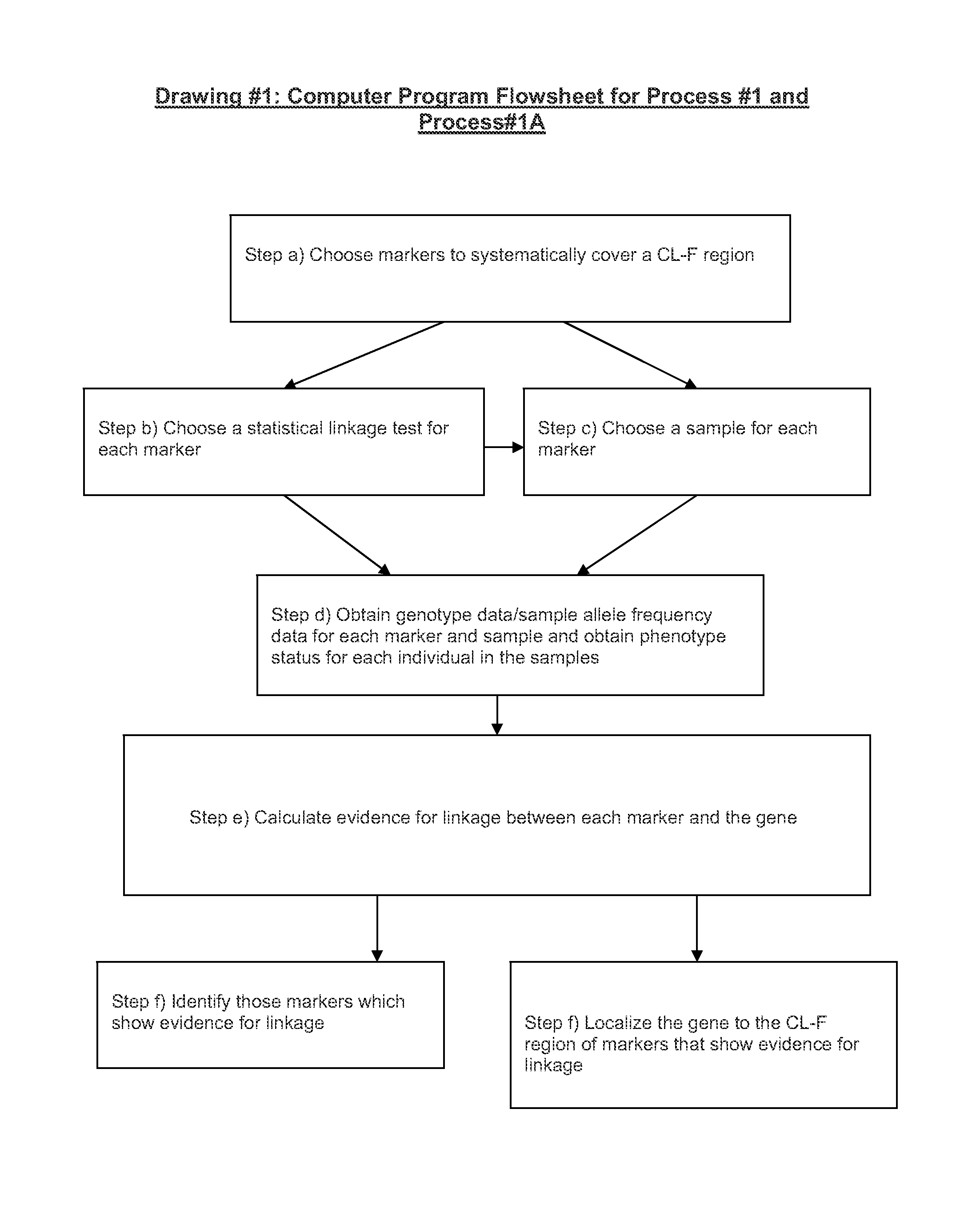Two-Dimensional Linkage Study Techniques
a linkage study and two-dimensional technology, applied in the field of molecular biology, can solve the problems of unfavorable bi-allelic markers with less common allele frequencies, unfavorable bi-allelic markers, and limited power to localize trait-causing genes (trait-causing polymorphisms)
- Summary
- Abstract
- Description
- Claims
- Application Information
AI Technical Summary
Problems solved by technology
Method used
Image
Examples
example 1a
[0160 process for identifying bi-allelic markers linked to a bi-allelic disease gene in human beings, comprising the steps of:
a) choosing two or more bi-allelic covering markers so that a CL-F region is N covered to within a CL-F distance [250,000 bp, 0.1] or the equivalent thereof by the covering markers, wherein N is an integer number greater than or equal to 2;
b) choosing the same statistical linkage test based on allelic association for each covering marker;
c) choosing the same sample of individual human beings for each covering marker;
d) obtaining genotype data at each covering marker for each individual in the sample and obtaining phenotype status data for the disease for each individual in the sample;
e) calculating evidence for linkage between each covering marker and the gene using the test chosen in step b) and the genotype data at each covering marker and the using the phenotype status data for the disease for each individual in the sample; and
f) identifying those covering...
example 1
[0179 of ProcessGd / Safd#1: A process for obtaining genotype data / sample allele frequency data for each bi-allelic marker of a group of two or more bi-allelic covering markers in the chromosomal DNA of an individual, wherein the genotype data / sample allele frequency data is genotype data, comprising:
a) means for determining information on the presence or absence of each allele of each bi-allelic marker of a group of two or more bi-allelic covering markers in the chromosomal DNA from an individual, a CL-F region being N covered to within the CL-F distance [12 cM, 0.25] or the equivalent it thereof by the two or more bi-allelic covering markers; wherein N is an integer number greater than or equal to 1; and
b) means for transforming the information of step a) into genotype data for each marker of the group.
[0180](It should be noted that the following genotype process is equivalent to Example 1 of ProcessGd / Safd#1: Genotype Process: A process for genotyping an individual, comprising:
a) m...
PUM
| Property | Measurement | Unit |
|---|---|---|
| frequency | aaaaa | aaaaa |
| length | aaaaa | aaaaa |
| density | aaaaa | aaaaa |
Abstract
Description
Claims
Application Information
 Login to View More
Login to View More - R&D
- Intellectual Property
- Life Sciences
- Materials
- Tech Scout
- Unparalleled Data Quality
- Higher Quality Content
- 60% Fewer Hallucinations
Browse by: Latest US Patents, China's latest patents, Technical Efficacy Thesaurus, Application Domain, Technology Topic, Popular Technical Reports.
© 2025 PatSnap. All rights reserved.Legal|Privacy policy|Modern Slavery Act Transparency Statement|Sitemap|About US| Contact US: help@patsnap.com



